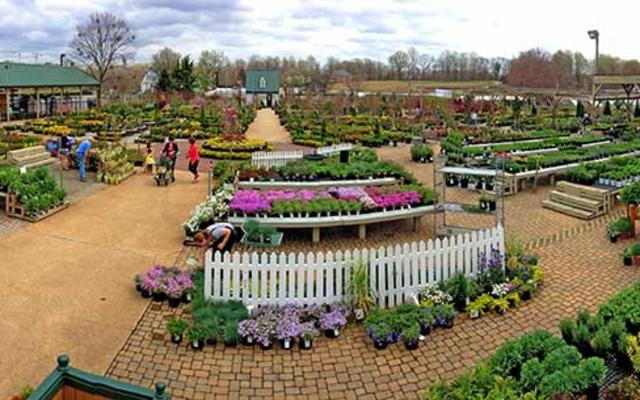Eco-Friendly Methods in Homestead Gardening
Eco-Friendly Methods in Homestead Gardening
Blog Article
Learn Just How to Grow a Prospering Gardening Environment for All Ability Degrees
Creating a prospering yard is a diverse undertaking that can be embraced by people at any kind of skill degree. By examining essential parts such as soil health and wellness, ideal plant selection, and seasonal treatment regimens, one can develop a sustainable horticulture practice that yields gratifying results.
Recognizing Your Garden Space
In the world of horticulture, understanding your garden area is vital to growing a thriving landscape (Homestead Gardening). The very first step in this undertaking involves evaluating the certain features of your plot. Factors such as soil structure, sunlight direct exposure, and drain play critical roles in identifying the suitability of your yard for numerous sorts of plants
Begin by performing a dirt examination to analyze pH levels and nutrient content, which will inform any required changes. Furthermore, observe just how much sunlight your space receives throughout the day. Different plants have varying light requirements; some thrive completely sunlight, while others favor partial or complete color.

Finally, examine the offered space and plan accordingly. This consists of taking into consideration plant elevations and spread to guarantee adequate area for development without congestion. By acquiring an extensive understanding of your garden room, you established the foundation for a successful horticulture experience.
Choosing the Right Plants
Picking the right plants for your yard needs careful factor to consider of different elements, including environment, soil conditions, and individual preferences. Beginning by examining your regional climate, as details plants flourish in particular temperature level varieties and weather patterns. Exotic plants may not survive in chillier regions, while sturdy perennials can withstand extreme wintertimes.

Consider your personal choices, including visual allure and upkeep degrees. Choose whether you choose vibrant blossoms, lavish foliage, or edible plants. Additionally, consider the time and effort you are eager to buy plant treatment, as some selections demand even more focus than others.
Lastly, consider the garden's design and light direct exposure. Sunlight patterns throughout the day will affect your selections-- some plants require full sunlight, while others grow in shade. By thoughtfully analyzing these elements, you can create a unified and effective garden tailored to your atmosphere and preferences.
Necessary Horticulture Devices
A well-appointed garden enthusiast can considerably enhance their gardening experience and outcomes. Vital gardening tools are essential to cultivating a successful garden, regardless of ability degree. A strong spade directory is vital for excavating and turning soil, while a trowel allows for specific growing and hair transplanting of smaller plants.
Pruning shears are vital for keeping plant wellness by eliminating overgrown or dead branches, promoting far better air flow and growth. Additionally, a hand rake is useful for getting rid of debris and aerating the dirt, making sure optimum problems for plant origins.
Gardening gloves protect hands from blisters, thorns, and chemicals, making them a crucial device. A watering can or hose with a flexible nozzle makes sure that plants receive ample wetness without overwatering.
Lastly, take into consideration buying a sturdy wheelbarrow for delivering soil, plants, and devices around the garden successfully. By setting up a quality toolkit that consists of these important things, gardeners can tackle different tasks with confidence and convenience, paving the means for a flourishing horticulture atmosphere. Bear in mind, the right tools not just boost effectiveness yet also boost the overall pleasure of the horticulture process.
Soil Prep Work and Maintenance
Quality soil is the structure of a successful garden, making appropriate prep work and maintenance vital for healthy plant growth. The primary step in soil preparation entails testing its pH and nutrient levels. This can be accomplished via soil testing sets readily available at gardening Continue centers or with specialist solutions. Based on the test results, changes can be made to maximize dirt problems for specific plant demands.
Integrating natural issue, such as garden compost or well-rotted manure, is essential for improving soil structure and fertility. This not only enhances nutrient availability but also promotes useful microbial activity. Furthermore, appropriate drain is important; heavy clay soils may require the enhancement of sand or perlite to boost oygenation.
Normal upkeep of soil health and wellness includes mulching, which conserves moisture and suppresses weeds. Turning crops annually aids stop nutrient exhaustion and decreases insect and disease threats. It is likewise essential to avoid over-tilling, which can interfere with dirt structure and harm valuable microorganisms.
Eventually, a consistent dedication to soil preparation and upkeep will result in a prospering yard, ensuring that plants get the essential nutrients they need for robust growth and productivity.
Seasonal Care and Management

In springtime, concentrate on growing new seeds and plants, while also performing soil examinations you could look here to amend nutrient deficiencies. Routinely look for diseases and bugs, as these can proliferate with the warming weather condition. Summer demands regular watering and mulching to keep dampness, along with trimming for far better air circulation.
As fall approaches, it's time to prepare the garden for dormancy. This consists of harvesting crops, cleansing up particles, and applying a layer of mulch to shield plant roots from frost. Think about growing cover plants to enrich the soil throughout the winter season.
Inspect structures like greenhouses for damage and guarantee appropriate insulation for sensitive plants. By adapting your horticulture practices to the seasonal cycles, you can foster a growing atmosphere that sustains plant health and wellness year-round.
Verdict
In final thought, cultivating an effective garden requires a thorough understanding of necessary principles such as dirt make-up, sunlight direct exposure, and proper plant selection. Normal seasonal care and management techniques even more enhance plant health and wellness and productivity.
Picking the right plants for your garden requires cautious consideration of numerous elements, consisting of climate, dirt conditions, and individual preferences. Conduct a dirt test to establish pH levels and vitamins and mineral content, which will certainly direct you in picking plants that will prosper in your garden.Last but not least, consider spending in a sturdy wheelbarrow for delivering soil, plants, and devices around the yard effectively.Quality dirt is the foundation of a successful yard, making proper prep work and upkeep essential for healthy and balanced plant growth. Homestead Gardening.In final thought, growing a successful garden needs a comprehensive understanding of vital concepts such as soil structure, sunshine direct exposure, and suitable plant choice
Report this page